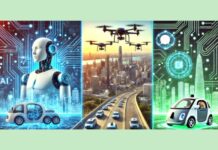Imagine watching a blockbuster movie where every scene, character, or plot twist is crafted by a machine. The gripping story keeps you on the edge of your seat, the characters feel real, and the special effects are mind-blowing. Sounds fascinating, right? This scenario is no longer just the realm of science fiction. But it raises an intriguing question: Can machines be truly creative?
Artificial intelligence (AI) has made remarkable strides in recent years, astonishing everyone with its capabilities. From playing chess to diagnosing diseases, AI has proven to be a game-changer.
Before exploring whether AI can be creative, let’s first understand what creativity is. At its core, creativity involves generating new ideas, solutions, or works of art that are both original and valuable.
AI and creativity: the current landscape
AI has already made significant strides in the realms of art, music, writing, and design. AI algorithms like Google’s DeepDream and OpenAI’s MuseNet have created stunning visual art. AIVA (Artificial Intelligence Virtual Artist) has been composing symphonies that are indistinguishable from those written by humans.
In writing, AI language models such as GPT-4 can craft essays, stories, and even poetry that often appear indistinguishable from those written by humans. Additionally, AI tools have proven adept at designing logos, websites, and fashion items, providing fresh ideas and unique aesthetics that push the boundaries of traditional design.
AI’s process of creating differs significantly from human creativity. It involves three main steps: data collection, pattern recognition, and generation. First, AI is trained on large datasets, such as images, music tracks, or written text. Next, it identifies patterns and structures within this data. Finally, it uses these patterns to generate new content that aligns with what it has learned. This method allows AI to produce impressive works, but it is fundamentally different from human creation.
The Human Touch in Creativity
Using AI in the creative field offers several benefits, but it is important to understand that these tools are only supportive and cannot fully replace humans. It is crucial for humans to learn how to effectively use AI-enabled creative automation solutions.
Reflect on a time when you felt particularly creative. What sparked it? An emotional experience, a sudden insight, or inspiration? Take a moment to think about it. Your creative process is unique and valuable!
Human creativity is driven by emotions, experiences, and the desire to express individuality. This emotional depth and personal touch are aspects of creativity that AI lacks.
Enhancing Human Creativity with AI
While AI cannot replicate the full spectrum of human creativity, it can enhance it in several ways. AI can quickly generate numerous ideas, providing rich inspiration for humans. By handling repetitive and time-consuming tasks, AI frees humans to focus on more innovative aspects of a project. Additionally, AI can help explore new creative territories by suggesting combinations and possibilities we might not have considered. These capabilities make AI a powerful tool for augmenting human creativity.
Conclusion:
So, can machines be truly creative? While AI can produce impressive works and mimic certain aspects of creativity, it currently lacks the emotional depth, abstract thinking, and personal touch that characterize true human creativity. However, AI can be a powerful tool that enhances and expands creative potential. The future of creativity is not about choosing between humans and machines, but lies in the synergy between them.Like the tech before, it can enhance human productivity and creativity to levels not seen yet. It should not be seen as a threat but as an aid which can make our life zillion time better.Yes, it can be misused and we need regulation but benefits far outweigh risks.

















